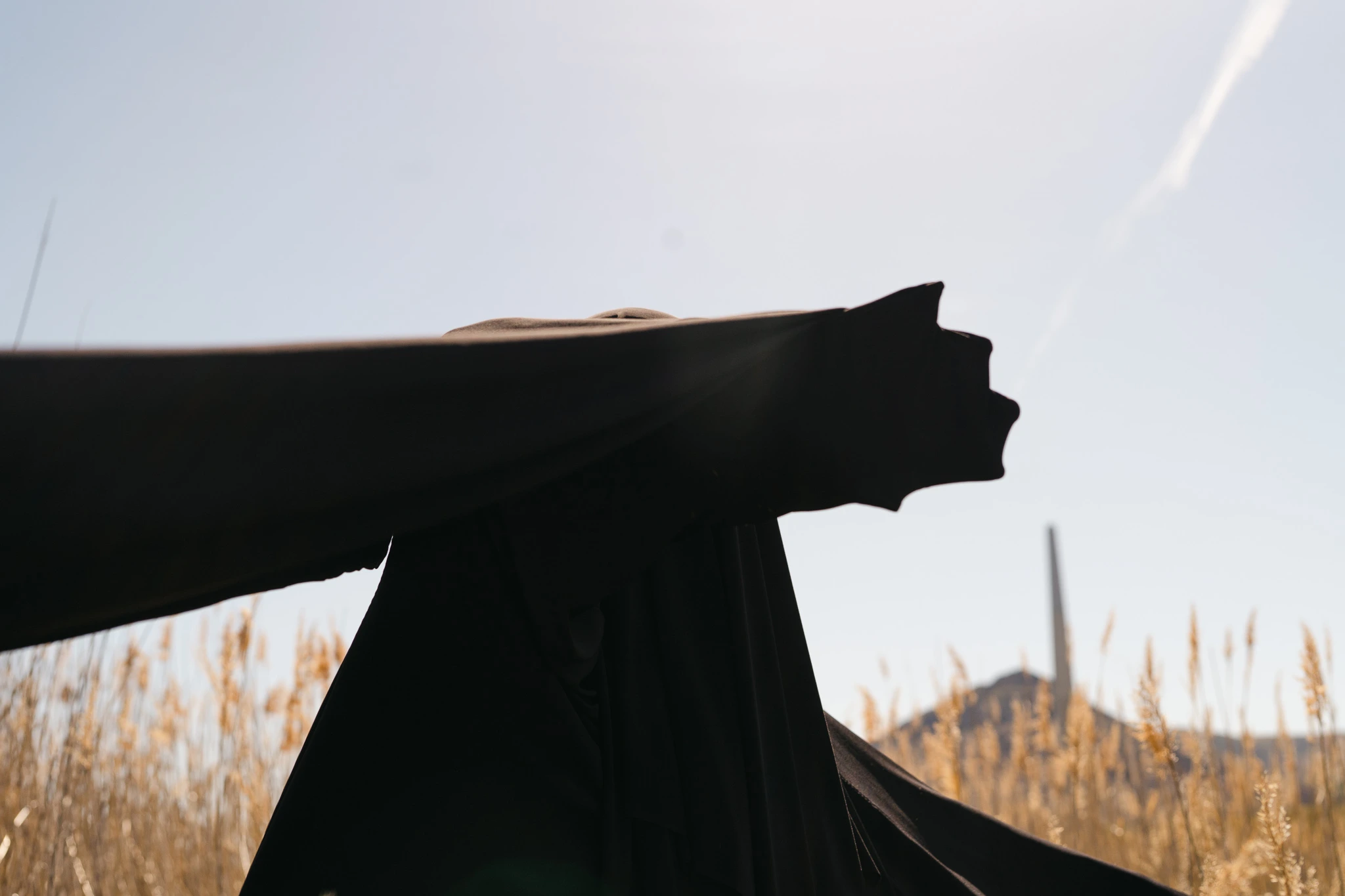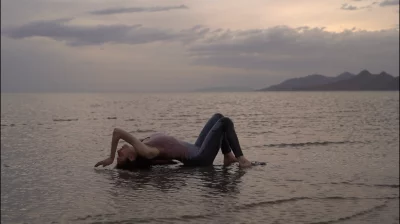
The Anarchy of Dance in “Lake Bodies”
Arts
The slow, shrinking, apparent death of the Great Salt Lake has affected many Utahns deeply. It has caused frustration, despair, fear and confusion. Many have wondered what they can do to save it.
Dancer Kara Komarnitsky and poet milo have felt this way, too. “A big part of the solo that made it into [‘Lake Bodies’] I made while researching embodied practices for processing climate grief,” says Komarnitsky.
These emotions, along with others of rage, hope and love were critical in the creation of “Lake Bodies, accompanied by lake words,” a Great Salt Lake–focused dance short that premiered in August of 2024. The film features three dance segments intercut with lakeside ecosystems: a dark-robed grief creature pulled to-and-fro by off-screen ropes, a melancholy eared grebe twisting across mudflats and a human figure gasping on the shore. A score by composers Michael Wall and Steph Kasallis is set beneath poetry by milo and the lake words collective.
“The words of ‘Lake Bodies’ are words a lot of folks haven’t heard before, or are really uncomfortable hearing.”
The eight-and-a-half minutes slip by. A first glance at the film shows a pensive elegy for the natural world. A closer look reveals the project’s fire.
“There’s a reason there’s a smokestack in the shot with the grief body in the first section,” recounts Komarnitsky, the project’s executive director. “That’s also what you see when you go out there. I’m feeling the violence [there].”

“Lake Bodies” is not a feel-good environmental parable, nor is it a hopeless dirge bemoaning the loss of nature. “Lake Bodies” appreciates the totality, focusing on the dark realities of an ecosystem that is still alive, but is being killed both ecologically and metaphysically.
“The biggest prison project in the country is being constructed on the lake shore. They’re constructing the prison so the common areas are surrounded by portholes that can dispense tear gas,” adds milo. “The words of ‘Lake Bodies’ are words a lot of folks haven’t heard before, or are really uncomfortable hearing.”
The film engages these difficult truths. The piece’s opening poem, “we don’t have to keep doing it this way,” describes the Bear River Massacre, the U.S. Calvary’s nearby 1863 slaughter of over 400 Shoshone people. “Lake Bodies” does not drown itself with tragedy, however. Komarnitsky explains that “first and foremost, we’re doing it because we love it.”
Komarnitsky and milo took a collaborative approach to capture the rawness of the Great Salt Lake. When working with the dancers in the film, Komarnitsky did not take a traditional choreographic approach: “I don’t tell anyone what to do. I’m [instead] attached to the integrity of the movers, figuring out how to guide people back to the kinesthetic experience that we collectively had with the ecosystem.”
milo’s approach was similarly anarchic, though in a different manner. “Those words have hardly been edited since I wrote them on the first piece of paper. I’m not really out here changing my words all that often.”
The communal, no-holds-barred approach was there from the genesis of “Lake Bodies.” After hearing milo read the two poems used in the film (part of the lake words collective’s chapbook lake words), Komarnitsky emailed milo about using the poems as part of her dance project “Flow State.” Upon critical and personal lauding of the work, the two began on “Lake Bodies.”
“I don’t tell anyone what to do. I’m [instead] attached to the integrity of the movers, figuring out how to guide people back to the kinesthetic experience that we collectively had with the ecosystem.”
“Lake Bodies” has continued to be successful. The film was shown at the Great Salt Lake People’s Summit and as a part of Westminster University’s 2024 dance showcase, Glisten. The pair have even taken the film to the Madeleine Choir School in Salt Lake. Moving forward, the creators hope people will continue to listen to the lake, even the hard parts. The last poem in the piece, “lake words,” reads: “may we cry our grief and praise. / see our tears buoy this great body / to swollen shorelines.”
Find more from Komarnitsky on their website, karakmoves.com, and find out more about lake words and zines from milo at lakewords.com.
Read more interviews with local artists and performers here:
Boudoir By Brie: Celebrating Every Body Through Photography
The Bold, Bright and Beautiful World of Sharon Reza
